http://usahitman.com/tmpscu/
There is so much information on this McMartin Preschool case, but
I have decided to break this post up in a couple different
parts/sections or articles. If you don’t know about this case, then you
have some research to do, but I have included a lot of the interesting
articles below or you can click here to get a list of results from
our website… There is a ton of information below, don’t become
overwhelmed with all the words and info. This is for archive/educational
purposes!
Digging for Tunnels (court records):
Real Tunnels at the School (Peggy Buckey photo):
Sidelot Excavation (court records):
Diagram Explaining Tunnels:
Inside one of the tunnels:
The Indicted
Ray Buckey (AP):
Peggy Buckey (AP):
Virginia McMartin (AP):
Attorneys
Prosecutor Lael Rubin (LA Times):
Defense Attorney Daniel Davis (LA Times):
Defense Attorney Dean Gits (LA Times):
The Experts
Kee MacFarlane:
Dr. William Gordon:
The Judge
William R. Pounders (LA Times):
The Jury
Jury at Press Conference (Corbis):
Kelly Michaels:
Photos Of Mountainside Worship Area:
Lessons from the McMartin Case
The Mcmartin Nightmare And The Hysteria Puppeteers
Suggestive interviewing in the McMartin Preschool and Kelly Michaels daycare abuse cases (PDF)
What Was Under The Mcmartin Preschool? A Review And Behavioral Analysis Of The “tunnels” Find (PDF)
AND Don’t Forget To Read All The Other Articles About This Case…
The McMartin Preschool Cover Up: Child Satanic Ritual Abuse
Very Detailed Report- From IPT Forensics
The longest and most expensive criminal trial in United States history had a modest beginning. On May 12, 1983, 40-year-old Judy Johnson dropped her two-and-one-half-year-old son off at the front of the McMartin Preschool in Manhattan Beach, California without notice and drove away. The school’s teachers cared for the unknown “pre-verbal” boy in the hopes that his mother would return for him at the day’s end.1 Although temporarily deserted by his mother, the boy was surrounded by a wide range of play objects that would have appealed to any toddler’s imagination. The items of inspiration included child sized wooden animals, some of which had been shaped and painted — complete with mouths, eyes, and ears — by Charles Buckey, the husband of Peggy Buckey. The latter owned the preschool jointly with her mother, Virginia McMartin. The animals were placed in the play yard, turning it into a child’s fantasy menagerie that included a giraffe, several rocking horses, a camel, octopus, dinosaur, and ducks (that children could sit and rock on), and at least one rabbit’s face-on profile placed on the wall by the door of the front office.
Mixed in with the animals were other objects for children to play on, or play in. A commonplace slide stood next to a makeshift helicopter that children could sit in and pretend to fly. A wooden structure dubbed “Fort – Issimo,” resting upon a large wooden platform accessed by two wooden steps, could be driven by one of the two steel steering wheels placed on its opposite ends. A “jungle gym,” made of connecting steel pipes, was available for children to swing on. A wooden car allowed children to pretend they were driving (they could even fill up the tank with “gas” from a nearby wooden gas pump). A wooden playhouse with the door removed was available for playing house. Perhaps the most imaginative play item invented and built by Charles Buckey for the preschool children was a set of above-ground “tunnels.” Formed by brightly colored connecting wooden boxes and extending about 18 feet in various horse shoe formations, the “tunnels,” as they were called by the children, provided a fun place for adventurous toddlers to crawl through.2
These so-called “tunnels” were the only tunnels that ever existed either above or below the premises of the McMartin schoolhouse and schoolyard — or above or beneath any property adjacent to the McMartin property.
Out of empathy for Johnson and her son, and unaware of the ensuing catastrophe that awaited her entire family and the school’s other teachers, Peggy Buckey signed the boy up for June classes. Buckey did not know that Johnson’s odd behavior on the day she left her son was the act of a woman who had a history of emotional problems serious enough to affect the judgment of any mother. Johnson had been out of money since separating from her husband for the second time two months earlier. On top of those problems she was despondent over her other (13-year-old) son’s inoperable brain cancer. Sometime during the summer, according to friends, Johnson began to drown her problems in alcohol.3
Prior to the time Johnson’s son was enrolled at McMartin, the preschool had been one of the most prestigious and respected businesses in Manhattan Beach. School founder and 76-year-old co-owner Virginia McMartin, Peggy Buckey’s mother, had earned four public citations for outstanding community service including the city’s highest honor — the Rose and Scroll award.4 The school was so popular that applicants usually had to wait six months before their children could begin classes.5
Satanic Trappings and the Search for The Secret Rooms and Tunnels
The formal charges were wrapped in a conspiracy theory that portrayed the defendants as satanists who used the preschool as headquarters for a vast kiddie porn/prostitution empire that produced millions of child sex photos. The children were allegedly drugged and forced to participate in satanic rituals and sex games with teachers and strangers at both on and off campus locations. During those episodes the children encountered turtles, rabbits, lions, a giraffe, a sexually abusive elephant, dead and burned babies, dead bodies in mortuaries and graveyards, goat men, flying witches, space mutants, a movie star, and local politicians.
The on campus rituals allegedly occurred in secret rooms, located above and below ground, that were accessed by trap doors and underground tunnels. Some of those tunnels led to the street or to the garage of a neighboring triplex; from there the teachers transported the children by automobile on various felonious field trips, sometimes to distant locations arrived at via train, airplane (with the children packed tightly in crates) and hot air balloons. The children had been sworn to silence by threats against their parents’ lives, illustrated by the killing and cutting up of small animals and a horse: “If you tell, this is what will happen to your parents!”
In March of 1985, a group of 40 to 50 McMartin parents led by Bob Currie arrived on the vacant lot next to the school to dig for animal remains and a secret underground room.40 Several days later, an archaeological firm hired by the District Attorney’s Office began its own excavation. DA’s investigators interviewed children on the school site and searched for trap doors. No evidence was found to support the children’s claims about underground tunnels or rooms.
The Missing Tunnel
Dr. E. D. Michael, a consulting geologist, was retained by MTP coordinator Ted Gunderson to help the project personnel validate the presumed existence of the parentally anticipated tunnels and secret rooms. He visited the site on several occasions as the alleged tunnels and rooms were being unearthed. Michael examined the trenches dug by the MTP throughout the preschool site and vacant lot and concluded that, “Generally, the results of my examinations were negative insofar as proving the existence of a tunnel.” Any such tunnel, he added, would “require shoring, i.e., some sort of support for the walls and ceiling, because the dune sand, even as well compacted as it is, would cave in if it became too damp.”165
Stickel makes a big issue of his use of Ground Penetrating Radar (GPR) as opposed to the Terrain Conductivity Meter used by SRS to detect soil anomalies that might indicate underground tunnels or rooms. “The GPR was the most suitable instrument to use at the site in question because other instruments (e.g. the terrain conductivity meter and the electrical resistivity meter) in general would be too affected by the electromagnetic ‘noise’ echoing from the preschool structure due to the presence of iron reinforcing rods and other metallic objects. Such interference produces meaningless records.”166
The MTP team used GPR over vast portions of the McMartin preschool site and the adjacent vacant lot. Stickel concludes that the GPR successfully detected portions of the 50-foot tunnel in units on either side of classroom #4 and #3 (Stickel, pp. 37, 88; Fig. 12, p. 38). But the firm, Spectrum, that conducted the GPR survey of the properties reported that, in all areas, reading down to 8-10 feet, “No evidence was found to support the existence of filled-in, below-ground tunnels.”167
By contrast, the claim is made by Hobbs and Summit that Joanie (not her real name), a 13-year-old former McMartin student, guided the tunnel diggers and even anticipated discovery of underground artifacts or points of interest that Hobbs claims were actually excavated in the alleged tunnel.168 For example, Hobbs and Summit claim that Joanie anticipated an underground pipe that she said she would sometimes swing on as she passed through the tunnel. Hobbs stated when interviewed by this writer that Joanie’s prediction that diggers would find a pipe with steel bands on it was an important factor in convincing him that the tunnel had actually existed.
Summit states that Joanie “gave a meticulous description of every step along the way” and that the waste pipe was found “just as Joanie had described.” Summit also states that Joanie had “anticipated on the spot” and that “numerous [other] children” had similarly implied the existence of all that was discovered in the alleged tunnel by MTP excavators. The discoveries included the pipe, a supposed arch in the foundation between the two rooms, and the secret room with its accompanying tar paper and plywood (supposedly roofing material for the tunnel — this is discussed below).
But the account of Joanie’s revelations given by Summit and Hobbs is, at best, wishful thinking. In fact, Joanie’s description of the tunnel was anything but meticulous, as Hobbs confirmed when I interviewed him. According to Hobbs:
There was also one girl who described grabbing a hold of this pipe in the tunnel and swinging and seeing these silver bands. When I asked her to create — we recreated the direction she went and everything. But she didn’t remember right from left. We found where the tunnel turned where she said — because I asked her how far. She was about 11 years old — and she said, “well far, but not too far.” I mean, you know, she was only like 4 when this happened. It was hard for her to determine, especially underground — distance. So she said she turned this way, and she pointed to the right, and we followed down there . . .[and came to] the profile of a turn. We followed that about 10 feet. We came across two stainless steel bands that were like new. They were the bands that they had described.But Hobbs also admits that the girl did not actually describe steel bands. Nor is there any record presently available, other than the claim of Hobbs and Summit, that any children ever described steel pipes or bands. The one-page preliminary MTP report summary does not say anything about pipes or pipe bands. Nor is there any other record corroborating the location of the room supposedly found by Stickel’s crew or even mentioning the room’s alleged roofing contents. In fact, Joanie’s original “recollection,” recorded by the DA’s investigator on site in 1985, is succinct and substantially different from her most recent recollection as recorded by Hobbs and Summit. She said simply that there was a trap door on the northwest wall of the northeast classroom. No door was found there.
But Joanie isn’t the only one who has changed her story. During his lecture on the day of the second McMartin verdicts (July 27, 1990), Summit gave the following account of Joanie’s participation in the MTP excavation:
One of the children, never a witness in the case, but someone who had told her mother all kinds of hair raising stories about her victimization as a child, as this dig was proceeding, and when she saw the pipe she said, “Oh, that’s the pipe,” and I’m paraphrasing. I didn’t hear her say this, “that’s the pipe that I would reach up and swing on. . . .” Okay, that’s when the dig was just as deep as the pipe and only that far. Subsequently the trench was dug further to the west and you see this huge hunk of concrete [pointing to a slide projection]. . . . it’s also true that whereas foundations are ordinarily poured into dirt at the bottom of the wooden forming and they pick up a surface of dirt debris, this [hunk of concrete] had been chipped clean and had even been chipped into kind of an arch shape, it wasn’t typical of the rest of the concrete footing (emphasis added).It’s clear from the above passage that Joanie did not anticipate the pipe. But in 1993, the Joanie of Summit’s tunnel story is depicted as directing the dig after admonishing workers that, “You’re not digging in the right place. That’s not where they were . . . Somewhere under here, under these two classrooms . . . and then you make a turn this way, and you know, sometimes it was fun to try and get your mind off this stuff, but there was this pipe overhead, and you could reach up and just swing on the pipe.”169
Summit’s arch also changes from “chipped” in 1990 and 1993 to “worn smooth, in contrast to the adjacent ragged contours and texture assumed by concrete poured into an earth bottomed trench.”170 The “arch” is discussed below.
One of the many weathered or poorly molded portions of the school’s concrete foundation that Dr. Roland Summit says, erroneously (as this photo proves), was inconsistent with another foundation section that he imagines to be “an arch.” (From court documents) The Secret Room
Referring to the cavity under classroom #4 that “may have been” the secret room,171 Stickel claims that 4 x 4 “beams” were found in the room along with a “layer of plywood roofing material with tar paper and roofing nails.”172 However, the beams are referred to merely as “2″ x 2″ and 2″ x 4″ wooden posts” in Stickel’s preliminary report. No photographic evidence is presented of these wooden posts. In any case, the presence of such posts, if they actually existed, would be much more consistent with historical recollections of outhouses and horse stables, than with tales of secret “devil” rooms solicited by therapists using “devil” puppets.
Stickel told hundreds of child abuse professionals at the San Diego CRCM conference that he believed that the tar paper served as a roof for what may have been the secret room.173 But the tar paper roofing material probably came from the former green house, described in the SRS report, that once sat on the roof of the neighboring house (on the adjacent lot). The house had stood for 24 years prior to the time the McMartin Preschool was built in 1966. The fact that the SRS report indirectly associated the discovered tar paper with the tar-paper roof of the neighbor’s green house but that this association went unmentioned by Stickel, who should have been aware of its contents, suggests either a poor memory or deliberate misrepresentation.
The secret room, according to Stickel, was up to 9 feet wide and, unlike the height of the hypothetical tunnel, its 6’8″ height offered enough space for an adult to stand upright.174 But Dr. Michael and Hobbs, both of whom could, and did, crawl in the cavity — it was Hobbs who actually found it — give much lower height measurements. Michael reported, in the appendix to Stickel’s report, that the maximum depth of the room was 44 inches, or 3’8″. Hobbs claimed that at the most it was 4’6″. In reality it proved to be a trash pit. In our interview, Hobbs described it as follows:
But I would say that it couldn’t have been more than 4½ feet. And it was about 8 foot wide, 7-8 feet wide as I remember, which a full sized couch wouldn’t have fit in. This was what the girls described. They didn’t describe a full sized couch. They described a couch big enough for two adults and a child to sit on. [One boy said the room had chairs, a wooden table and a sofa.]Michael pointed out in an interview that in his report he purposely used the word “cavity” to describe the space in order to differentiate it from a room. “I didn’t think anyone thought it was a room.”175 And in a letter to Stickel, Michael listed the possible causes for the cavity’s formation:
(a) it could have been excavated, i.e., created by the removal of material that previously occupied the volume of the cavity; (b) it could have been left as a result of the incomplete filling [of] a previous, larger cavity such as a tunnel excavation; (c) it could have formed as the result of the caving of an underlying cavity.176The known history of the land area, plus the “abundance of bottles, wood, and other debris,” including the tar paper and plywood, suggests the cavity was once a trash dumping cite, not a secret underground room.177
The “mysterious” concrete slabs (found on the vacant lot)? Stickel, however, sticks to the least likely interpretation that the cavity is a remnant of a man made tunnel. He concludes that the northern trench extending south and then east across classroom #4 and into classroom #3 meets the nine test criteria for determining the existence of a tunnel. His reasons for arriving at this conclusion follow:
1) The alleged entrance, under the foundation footing about 128″ south of the northwest corner of the northwest classroom (Ray’s room) was large enough, according to Stickel, for adult human passage.
Large enough for which adults to pass through? Certainly not for at least some of the McMartin defendants. Peggy McMartin Buckey, the school’s owner, was 60 and very heavy when the case broke. She also suffered from claustrophobia.178 Former McMartin teacher Betty Raider was 67, large and no more mobile than a typical person of her age. She also had poor eyesight.179 Mary Ann Jackson was 60.
All of these former adult defendants, as well as three younger ones, were alleged to have traveled through the tunnels with their toddler charges. How did all of the teachers and school children manage to fit through the supposed entrance and tunnel passage and into the “secret room” that contained a table, several chairs, a couch and two lions and was, at most, 4½ feet high? How did they breathe in compact underground cavities and why didn’t a visiting parent ever notice any of the alleged trap doors?
2) The 50′ tunnel was both linear and slightly curvilinear (i.e. an elongated passageway leading in a definable direction(s).
As described in the MTP report, the alleged tunnel follows an unlikely path, taking a sharp turn to the right just after the alleged entrance, instead of continuing in a straight line to the hypothetical underground room (i.e., the cavity for trash described above) by the shortest distance between two points.
3) The tunnels were “large enough for adult human passage,” although, admittedly, adults would have to bend over. This plausibility was already discussed in (1).
4) “Characteristic scars indicating that it (the tunnel) had been dug by hand were noted in the large (room-like) sector of the feature in Classroom #4.”
The mere presence of shovel marks may prove that someone dug the cavity but it does not offer a clue as to how the shallow cavity was used. Also, these marks are not visible in the photographic documentation. In fact they are not visible at all in the photo. There is also no record that these marks exist in other areas of the “tunnel.”
It is also difficult to understand how the shovel marks of the excavators could be distinguished from previous shovel marks, given the fact that shoveling was a necessary part of the excavation. The evidence, as discussed above, is that this cavity was used to store trash. It may be assumed that whoever dumped the trash first dug a cavity to place it in — a perfectly normal and expected event.
5) “The feature had a compacted dirt floor (especially noted in the room-like sector) which was distinguishable from the non-compacted soil matrix found in immediately adjacent, but non tunnel, areas.”
No photographic documentation of this has been provided. In light of Dr. Michael’s report to Stickel that the dune sands, which makes up the area’s soil formation, were “very well compacted” it seems unlikely that Stickel’s observation that the surrounding area was “non-compacted” is accurate.180
6) “The tunnel was not found open.”
7) “In contrast, the tunnel was found to have been completely, artificially filled in with soil. The fill soil had been very tightly compacted so as to leave no small openings. The soil used for fill was distinguishable on the basis of color, texture and compaction from the original soil deposit at the site.”
The presence of artificial fill, compacted or not, does not prove that a tunnel existed. There is no logical explanation how the tunnels could have been filled in after 1983, as theorized.181 The defendants, if not under surveillance or incarcerated pending bail for periods of months to years, could not have performed the job of filling in a 30-inch wide, 50-foot long tunnel by themselves.
A work crew hauling in wheel barrels full of dirt and pre-1940s’ trash deposits (where would this trash be obtained in 1983?) in and out of the school grounds (which were highly visible from busy Manhattan Beach Blvd.) would have been easily noticed by passers by or neighbors in the day or night.182 McGauley’s claim that one neighbor did witness “workers with wheel barrels at night” is offered without corroboration, as is her analysis that other neighbors did not report tunnel refilling activities because they were “apparently all involved [with the alleged perpetrators].”183
Stickel admits the task of refilling the tunnel would have required “a great deal of dirt,” but the most scientific hypothesis he has presented so far is that the tunnels would have been filled in “very carefully.”184
It is also unlikely that the alleged tunnel could have been tightly compacted without detection. According to SRS geophysicist Bob Beers, “If you have a large tunnel, big enough for a person to crawl through, no matter how much you throw dirt in it, and you’re talking about trying to fill it to the brim, and compact it given one or two rainy seasons, that dirt is going to compact and you’re going to end up with a little air gap between the natural soil between the top of the tunnel . . . You would visually see it.”
Detectable mud deposited by ground water in between the top of the fill and the ground level might also be present, according to Beers.185 There is no mention or documentation of the above phenomenon in Stickel’s report.
8) The tunnel fill contained large inclusions of artifacts (1603), especially in the possible room area, including “four large containers found upright in the tunnel’s passage under the dividing wall between Classrooms #3 and #4.”
The presence of trash artifacts proves the existence of trash artifact, not tunnels. The containers are discussed below.
Estimating Dates of “Tunnel” Artifacts
Stickel lists seven methods of “probabilistic dating” for establishing the alleged tunnel was filled in after the construction of the school — thus giving added credibility to stories told by children.
1) Pipe straps for a waste pipe under classroom #3 are thought to have been attached after the school was constructed, thus helping to prove that the “tunnel” was filled in after the construction of the school. The conclusion is based upon the February 1966 patent date of the straps (vs. the September 1966 construction date for the building) and the fact that the bands appear new (very little corrosion or patina) compared to other pipe bands found under the property. “In the opinion of the Historic Artifact Analyst and the archaeological team, the date of the placement of the straps is much more recent than the construction date of the preschool of 1966.”
In his 1993 appearance at the CRCM conference in San Diego, Stickel claimed, incorrectly, that the pipe connectors found on the pipe would not have been available until two years after the issuance of the patent. The Historical Analyst’s report did not state that the straps were placed on the pipe much more recently than the construction of the school. In fact, the historical analyst interviewed the pipe band’s manufacturer: “When asked if this could have been installed by September, 1966, he thought that was ‘unlikely’.” However, “He did not believe Ideal [company's name] would have records going back to the mid-sixties that would provide further data on the marketing of this exact piece.” The analyst thus concludes that, “It is possible, but unlikely, that the pipe joint clamp was installed at that site between the item’s manufacture date and the school’s construction.”186
In any case, the bands had to have been in place at least 6 years (since 6 years had elapsed from the supposed 1983-84 tunnel refilling and the excavation of the clamps). The in situ appearance of the clamps after at least 6 years underground should not be bright. However, slides of the in situ find show shiny pipe clamps, as if they had been freshly polished.
There was, in fact, some corrosion on the clamps. But, according to Dr. Michael, the apparent difference could be explained in other ways:1) The two sets of pipe clamps found under the school may not have been processed at the same level of quality; 2) by differences in soil acidity; and 3) by differences in water permeation in the soil area.187 These possibilities were not considered in Stickel’s report.
Thus, Stickel’s conclusion amounts to speculation based on insufficient and possibly tainted data. On balance, the theory that the pipe bands were in fact released for sale in time to appear under the McMartin school by construction time must be considered much more probable than the existence of troglodytes.
2) The discovery under room #4 of a mailbox that was once used by the owners of the neighboring house (in the vacant side lot). The house was torn down in 1972, causing Stickel to speculate that the mailbox [and thus the "tunnel" fill] “most probably” dates to after the demolition of the house.
Once again, Stickel reacts to the data with speculation instead of sober analysis. There is no established date for the mailbox. The house was occupied for 30 years prior to its destruction and 24 years prior to the construction of the McMartin preschool — more than enough time to discard old or unwanted mailboxes or any other items related to the house.
Ted Gunderson, project coordinator for the MTP, apparently sought out the former owners of the house to ask them when the mailbox was discarded. A handwritten note (on a copy of the one page preliminary tunnel report) to “Rico & Nancy,” apparently with his signature attached, states: “I need to locate Mark [son of the deceased former owner] an (sic) find out the date the mailbox was taken down. This will give us an idea when the tunnel was filled in.” The query and its possible results are not mentioned in Stickel’s report, suggesting that the research was not completed or that its results were unacceptable.
3) A “Mickey Mouse” sandwich bag that says “Disney Class 82/83,” copyrighted 1982, and was allegedly found in the “fill matrix” under room #4 “probably indicates that the tunnel fill (or at least some of it) dates to that time or thereafter.”
Stickel (p. 84) supports his conclusion with Michael’s analysis of the find: “Therefore the cavity could be no older than 1983, assuming the Disney Corporation did not manufacture a wrapper prior to the time of the copyright date appearing on it. Even if it did, it probably would not have done so much before 1983 and certainly not as early as 1966 when the McMartin School building was constructed.”
But Michael was assuming that the artifact had not been introduced into the fill in a clandestine manner. In fact, the cavity or “tunnel” area could have existed prior to the manufacture of the Disney bag or wrapper, which could have been introduced at any time after its manufacture. Michael acknowledges that it could have been placed with the intent of creating false evidence. No photograph clearly showing the bag in situ has been made public. When asked if the bag constituted scientific evidence of the existence of a secret room, he replied, “Not at all.”188
There was ample opportunity for the bag to have been covertly placed. The McMartin parents dug in the same area of the alleged tunnel entrance on three separate occasions, two of which are not mentioned in Stickel’s report. The first two times parents dug holes at random near Ray Buckey’s room; although the exact location is not known it is clear that the holes could easily have been at or near the location in which the Disney bag was allegedly found in 1990. In the third dig, conducted by parents with a backhoe, one trench was dug right up next to the spot where the Disney bag was reportedly found by Hobbs. Considering the lack of site integrity, (see above) it is also conceivable that the bag was introduced between April 21 and May 8, 1990.
4) The “arch” under the foundation between rooms 3 and 4 and over the alleged tunnel between the two rooms, is “obviously a feature made to accommodate the tunnel and there is no other conceivable scenario to account for it if it were created before the preschool was constructed.”
The feature is clearly not an arch. If it was formed by human beings they must have used their feet to sculpt it because it is clearly irregular and rough in shape. Its shape is so slight that it serves no useful purpose anyway. Even if there had been a tunnel at that location, there would have been no need to construct an arch; it would have been much easier and less time consuming to simply dig a little deeper if more height were needed. The combined photographic evidence from Stickel and from SRS of the school’s concrete foundation — and the most cursory look at concrete foundations of houses, buildings, and curbside etc. — shows that the formation of the “arch” is entirely consistent with the natural process of erosion.189
5) “Four large containers (1 ceramic and 3 metal pots)” found under the supposed “arch,” standing upright and full of intact glass artifacts (coke bottles and jars), allegedly hand placed at a shallow level from which they certainly would have fallen during original (1966) landscaping for the property, thus breaking the glass contents within.
The pots, whatever their purpose or origin, fall within the same category of evidence as the above artifacts also misused for “probabilistic dating.” The issue was already examined above (see Photographic Documentation).
6) The tunnel’s dirt ceiling was too weak to have supported human foot traffic from above; it would have required significant shoring up. That requirement was met, however, by the school’s concrete foundation which served as a “de facto roof.”
It’s hard to understand how this theory helps date the alleged “tunnel” other than by assuming a priori that it was originally constructed at the same time or after as the school. The theory is inadequate compensation for the fact that essential support beams for the walls and the ceiling of the alleged tunnel were not found during the excavation (see #7 below).
7) Soil was redeposited on the E/W axis of the school building (prior to construction) and compacted to level the property. “Therefore any holes or openings found in that area extending up to or near the surface would necessarily date to a time after 1966.”
The ceiling of the alleged tunnel, according to Stickel’s preliminary report, was 30 inches below the school’s concrete floor. The fill used to level the property was two feet thick.190 There is no evidence that soil intrusions below that depth were made for the purpose of constructing a tunnel. The evidence shows only that trash pits were present on the property and that, subsequent intrusions into the top soil were made by excavators searching for tunnels.
Stickel’s Conclusions About the Evidence He Claims to Have Obtained from the Archeological MTP Project
In Section 1.4 of his report, Stickel says that a tunnel on the McMartin site could have been dug out as a trench and then roofed with wood or it may have been dug out from under an existing foundation. In the latter case, the tunnel could have had wood covering in place to protect tunnel travelers from falling dust or to help hold up the ceiling. “In either scenario such a tunnel may have had posts of wood and/or other materials (e.g. iron) to serve as shoring reinforcement and as a support system.” Stickel lays out nine test expectations that he believes should be met if tunnel(s) existed under the McMartin preschool:
1) An opening(s) (entrance and/or exit) large enough for human passage should be present permitting access from the surface down into a tunnel feature.
2) Tunnel architecture should by linear or curvilinear (i.e. an elongated passageway leading in a definable direction(s).
3) Tunnel architecture (especially depth or height and width) should be large enough to accommodate adult human passage.
4) The walls and/or uncovered soil ceiling in the tunnel should have “signatures” or markings indicating whether the tunnel had been dug by hand and/or by a machine (e.g. a backhoe).
5) There should be a compacted dirt floor (compacted by human traffic) distinguishable from surrounding non-tunnel soil which should not be that compacted.
6) The tunnel could be open (i.e. traversable and unfilled).
7) The tunnel may be naturally (i.e. natural process of erosion and soil redeposition) or artificially (by human action) filled in with soil. Such fill should be distinguishable from the natural soil matrix of the site in terms of color and/or by texture, and compaction (i.e. fill would be less compact than soil forming the tunnel’s walls, floor and ceiling).
8) Tunnel fill may have inclusions of:
A) Natural stones and/or other natural items or;
B) Artifacts and/or ecofacts (e.g. butchered animal bones).
9) Although a tunnel of the type sought in this project may not be directly datable (e.g. in contrast to a construction date molded into the concrete of a railroad tunnel), the tunnel may be dated indirectly by the dates on artifacts contained within it if any are present.
A secret room, according to Stickel, would have to meet essentially the same expectations, in addition to being large enough for possibly restricted but “face-to-face” interaction among “a number of people.” Since people tend to spend more time in rooms than in tunnels, one would expect to find artifacts such as “chairs, couches, tables, a lighting system, etc. . . .”
Stickel then discusses the application of remote sensing instrumentation, reviewing his experience with “various kinds” of remote sensing, noting that he and a colleague published the “most extensive underwater remote sensing survey (which utilized multiple types of instruments) ever conducted in European Archaeology.”163 That experience convinced him that Ground Penetrating Radar was appropriate for the McMartin Tunnel Project.
Stickel concludes that he found one possible tunnel, one definite tunnel and one possible underground secret room.164 The “definite” tunnel ran from an entrance/exit from under Ray’s room (classroom #4); and followed a sharp right (south) to the southwest corner under Ray’s room where the “possible” secret room was located. Then it traveled east under the wall foundation that divided Ray’s room from room #3, then over to the east wall and up to the entrance/exit in the room’s northeast corner. The actual excavation ended about ¾ of the way through the room towards its east wall.
Read A Ton More Here
The underground “tunnels” of the McMartin Preschool
Background:
“McMartin” was one of the first Multi-Victim Multi-Offender (MVMO) child abuse cases. At 6 years duration, it was the longest US criminal trial in history. At a cost to the state of $15 million, it was the most expensive. No convictions were obtained. It has become the most famous case of its type. More detailed information is available.
During late 1983 and early 1984, the Children’s Institute International (CII) counseling agency interviewed hundreds of children who had attended the McMartin preschool. 360 were eventually diagnosed as having been abused. First one, and then many of the kids disclosed being led down through trap-doors in the floor of the preschool and taken through underground tunnels. They described some tunnels as leading to a nearby building, where the children were loaded into a vehicle and taken to another location (sometimes via an airplane flight, train or hot air balloon to another city) and abused. Other tunnels allegedly led either to an underground chamber or above ground room where they described being subjects in pornographic photographs and being sexually abused.
The first suggestion of underground tunnels and secret rooms may have emerged in 1994-FEB during the interview of a former student by CII. He said ” …like somehow I can’t remember. I’m not sure about. Ah, there was a room I wasn’t suppose to go in or something….I’m making this up. I’m not sure. Yeah, I can see it, I think.” At the preliminary hearing, he testified how Ray Buckey and the other teachers took him to play “Naked Movie Star” (kiddie-porn) games every weekday. In reality, Ray was not at the school until after the boy had graduated. He recalled that the secret room was the size of a classroom was located to the east of the school building and was accessible by a trap door and tunnel.
The existence of tunnels has been hotly debated since the mid 1980′s. If there were tunnels in McMartin, then at least part of what the children said was true; the rest of their testimony would then be much more credible. If no tunnels existed, except in fantasy, then the rest of the children’s testimony may also be unreliable. To believe in the tunnels has become almost a required article of faith in some quarters. Unfortunately, the site can no longer be examined. The McMartin building has been leveled and replaced by another structure.
The Trap Doors:
The children talked about many trap-doors, and one hole in the floor. These led to rooms either directly or via tunnels. Various groups have committed a great deal of effort in searching for the tunnels. However, the search for the trap doors may well give us a better understanding of the McMartin puzzle. 11 of the children interviewed by the DA’s investigators talked about the location of the access holes in the floor. A summary of their trap-door disclosures, sorted by entry location, is:
* These two disclosures were made by the same child and refer to what the child believes to be the same underground room.
Classroom 1:
trap-door under bathroom sink in SE corner of room; led to a tunnel and underground room trap-door in NW corner of room; led to long tunnel which led to a room under the outer play yard * Classroom 2:
no trap-door Classroom 3:
trap door in NW corner led to tunnel going east to garage next door trap-door in SW corner led to tunnel going east to garage next door trap-door in NW [sic] wall trap-door in middle of East wall; led to a tunnel to adjacent property Classroom 4:
trap-door in SW corner which led to 2 rooms under the school building trap-door in NW corner which led to tunnel which led to a room under the outer play yard * Front office bathroom:
trap door under sink, leading to underground room Outer play yard:
underground room accessible by regular door (presumably flush with ground) teacher and child dug a hole which led to a tunnel which led to a very large room (about half the size of a classroom) ladder led to underground concrete room Front play yard:
trap-door in a playhouse floor; tunnel went West to underground room 1
Note that all of the trap doors, and other entry routes were described as being in different locations. No two children described the same spot. If there had been tunnel entrances at McMartin, one would expect that a child would have remembered where it was located.
The floor of the McMartin preschool building was a poured concrete pad. “…the District Attorney’s investigators peeled back floor tiles and searched other locations to find trap doors at locations described by 11 children at the preschool site. There was no need to look under the foundation where openings or seals in the concrete were nonexistent.” 11 None of the access trap doors described by the children were ever found. It would have a straightforward job for the building owners to remove any trap doors, patch the concrete floor where the doors had been, and re-lay floor tiles. However, it is impossible to patch concrete without the edges being obvious to the eye.
Two examples of patched concrete are shown below. Both were taken in Kingston, ON, Canada near our office:
This picture shows a concrete sidewalk at a local shopping mall. A post had been removed and the cavity in the concrete pad had been refilled with concrete. The edges of the original hole where the post was located are clearly visible. There is a difference in the color, the texture and the surface roughness between the patch and the original concrete.
This picture was taken indoors in an corridor of a local industrial building. A portion of the concrete floor had been removed, some under-floor services had been installed, the excavation was backfilled and the concrete floor re-poured . The line between the original concrete floor and the new concrete can be easily seen. The carpenter’s square tool in the pictures is 9.5″ long. A wall and doorway can be seen in the right part of the picture. Patches in concrete slabs are very obvious. They cannot be made invisible. You can check this out for yourself. If you know of any places where concrete has been patched, examine them and see if the patch is clearly visible.
The outside playhouse at McMartin was also described by some of the children as an access point to the underground tunnels. The building was mounted on a solid concrete slab. Police inspection of the concrete showed that “no trap door had ever been located there”.
Searching for the tunnels
For additional details, refer to the article by John Earl. 1
1985-MAR, Parents Search: On MAR-4, some parents of McMartin students searched the vacant lot to the West of the school. They dug a random series of holes a few feet deep where the children had described tunnels and underground rooms. No evidence of tunnels was uncovered. About 4 dozen parents returned on MAR-15 with a backhoe. They dug a 60′ trench running north to south beside the west wall of the McMartin building. They then dug 6 east-west trenches, each 30′ long, starting from the original trench. They were searching for the remains of sacrificed animals and for any signs of underground rooms or tunnels. If any had existed, then they would have been easily found. The soil in the area is sandy and would have required elaborate shoring with wood or concrete to prevent cave-ins. 10 No evidence of such shoring was ever found. 1985-MAR, Archaeological Search: A few days after the parent’s search, an archaeological firm began to excavate. Scientific Resource Surveys, Inc. (SRS) had been hired by the DA’s office. They brought children onto the property to help them search for trap doors, tunnels and rooms. They scanned the area using a “terrain conductivity meter“, an instrument that detects the presence of underground caverns or changes in soil consistency by measuring the electrical conductivity of the earth. They detected two trash dumps, but no evidence of underground tunnels or rooms. 1990-APR, Parents’ Search: Some parents dug a hole 15′ deep under the north-east section of the school building. This would be underneath Classroom 3, the region where three children described tunnels that led to the building next door. No tunnels (and presumably no trap-doors or rooms) were found. 1990-APR, Gunderson Search: Ted Gunderson coordinated a 38 day excavation project. He had been an FBI agent in charge of their Los Angeles office. Consulting archaeologist Dr. E.G. Stickel was hired. He had become famous by claiming that he had found 40,000 year old human artifacts in the Santa Clara Valley of Northern California. (Most archaeologists believe that North and South America were devoid of human beings prior to about 9,000 BCE).After team members were interviewed by reporters, stories were published that a filled-in tunnel had been found or that an opening that could lead to tunnels was found. The team complained that District Attorney Reiner was ignoring their evidence; they would not release any of their findings because they did not trust the DA’s investigators. A one-page report written by Dr. Stickel was distributed to reporters and spectators on 1990-JUL-27 – the day that the final verdicts were announced in court. They implied that a number of tunnels had been found. The longest went 45′ from the south-west wall in an easterly direction, and 10′ along the north wall. This description makes no sense to us, because the building is aligned in a north-south direction; there is no south-west wall. If that was the longest tunnel, then presumably there were others found. They also claim that one tunnel led to a 9′ chamber. It is not known whether the dimension refers to its length, width or height.
Dr. Stickel’s final report totals 186 pages. It contains many confusing points
a photograph is shown of a fast food wrapper with a 1982/3 copyright date. This is said to have been photographed in situ i.e. exactly as it was found, before it was removed from the earth. But the photograph does not show the wrapper in situ. some photographs of soil variations are too dark to decipher many artifacts allegedly recovered from the “tunnel” were also not photographed in situ the report claims that they found one possible tunnel, one certain tunnel and one possible room. But all of these structures would have required elaborate shoring and bracing with wood or concrete walls. They would be quite obvious if excavated and not open to doubt. Yet no such shoring was found. a consulting geologist, Dr. E.D. Michael frequently viewed the digs and concluded that “Generally, the results of my examinations were negative insofar as proving the existence of a tunnel” Dr. Stickel concludes that Ground Penetrating Radar (GPR) detected tunnels. But Spectrum, the firm that conducted the GPR scans, reported that they turned up no evidence of tunnels. If tunnels and rooms once existed, they would have been filled in about 1983 in order to destroy any evidence. But the fill material that Dr. Stickel says came from a filled-in tunnel consisted of pre-1940 trash, discarded before the building was constructed. the physical effort to fill in the cavities would take a very large number of trips with wheel barrows, at a time when the preschool was under observation. Yet, nobody noticed anything. 5“…one would think that the line of dumptrucks around the block would raise a few eyebrows, especially given the controversy and attention surrounding the school at the time the tunnels were alleged to have been filled (after 1982).” 10 Conclusions:
Prior to the parents’ excavation in 1985-MAR, none of the children disclosed memories of a secret room under the school building itself. All were in the vacant lot to the west of the preschool. Shortly after the parents’ backhoe excavations turned up nothing, some children started to remember rooms under the school building. We suspect that the parents were disappointed that no tunnels were found where the children said they were. They probably sought other answers from the children, and easily persuaded them to reveal alternative, fictional locations underneath the building.
The “tunnels” and “room” that Dr. Stickel found were probably remnants of old trash dumps that were dug and filled many years before the Preschool building was constructed.
11 children described the locations of 13 entry doors. Yet the police were unable to find any trap doors or any remains of filled-in trap doors when they thoroughly inspected the building and playhouse. The obvious conclusion is that these are non-existent, fantasy trap-doors. The children simply made up stories in response to the interviewers’ repeated direct questions. Recent studies in the US and New Zealand have indicated how easy it is to pressure very young children to fantasize if questions are not properly asked. Simply repeating a direct question is often enough to get an invalid answer. The child initially answers correctly, but soon recognizes that they are not giving the investigator the “right” answer. Thus, they make up another answer to satisfy the adult.
Other components of the children’s testimony were clearly fantasy. For example, child molesters would hardly transport children to an abuse location by a hot air balloon, which is at the mercy of air currents. Even if by some miracle the balloon landed at the right location, the probability is extremely low that the winds would conveniently reverse direction exactly 180 degrees, in order to push the balloon back to the starting point. No child abuser with even a small amount of common sense would use a balloon to transport victims. We would assume that the trap-doors are like the balloons; they also exist only in fantasy.
We predict that investigators could select a few preschool hundred children in any locality in North America; interview them about their preschool experiences, using the same manipulative, suggestive methods as were used by the CII; and find dozens of children who would describe trap-doors, tunnels and underground rooms. Such a study could be designed without references to sexual abuse and thus could be conducted without any possibility of emotional harm to the children. Unfortunately, to our knowledge, such a study has never been conducted. If it were, the results would be very revealing.
The Real Tunnels:
Although no underground tunnels existed at McMartin, another type was present. The children referred to them as “tunnels”. They were open-ended, brightly colored, plywood boxes about 16″ wide, 24″ tall and 24″ deep. The children arranged them in various combinations on the floor like dominoes and crawled through them. These real tunnels were probably the root source of the belief in the mythical underground tunnels. 8
English Tunnels:
A case of real child sexual abuse within a family occurred in Nottingham, UK. Many children from an extended family were placed in foster care. After the foster parents had been briefed about “signs” of ritual abuse, the parents and children started to report child abuse in many underground tunnels throughout the district. A very thorough police investigation was conducted of each location; they turned up no evidence of any tunnels in the present or past. It is obvious that the belief about tunnels under McMartin has been embraced by Satanic Ritual Abuse (SRA) promoters in England as it has in the US. Their belief was then transferred to the foster parents who in turn prompted the children for memories of tunnels. Eventually, the children responded with fantasies of tunnels. These fantasies have probably developed into false memories.
References
Source
- John Earl, “The Dark Truth About the ‘Dark Tunnels of McMartin’”, Issues in Child Abuse Accusations, Vol. 7, #2, 1995 Spring, P. Institute for Psychological Therapies, 13200 Cannon City Blvd., Northfield, MN 55057. An expose on the McMartin day care center underground tunnel myth. $15 USF; $20 USF (foreign). The article is available online at: http://www.ipt-forensics.com/
- Ellen Bass & Laura Davis, “The Courage to Heal, Third Edition, Harper Collins, New York NY, (1994). P. 520-1. Cites Dr. Stickel as finding tunnels.
- Fukurai, et, “Sociologists in action: The McMartin sexual abuse case, litigation, justice, and mass hysteria..”, Vol. 25, American Sociologist, 01-01-1994, P. 44. Contains an overview of the case and details of jury selection.
- Paul & Shirley Eberle, “The Abuse of Innocence : The McMartin Preschool Trial”, Prometheus Books (1993). ISBN: 0879758090. The book’s authors attended the court sessions lasting over many years, and concluded that there was no case against the accused.
- E.G. Stickel, “Archaeological Investigations of the McMartin Preschool Site, Manhattan Beach, California”. Manhattan Tunnel Project (MTP), 1993. Introduction by R.C. Summitt. Paper is unpublished at this time.
- R.C. Summitt, “The Dark Tunnels of McMartin”, The Journal of Psycohistory, 21 (4); 1994-Spring, P. 5 – 13
- Alex Constantine, “McMartin Preschool Revisited” at: http://www.mk.net/~mcf/alxmrtn2.htm reaches an entirely different conclusion about the tunnels.
- Issues in Child Abuse Accusations, Vol. 7, #2, 1995-Spring. Cover photograph and Page 76.
- “Archaeological investigations of the McMartin Preschool Site,” Santa Cruz Ritual Abuse Task Force, at: http://members.cruzio.com/~ratf/McMartIntro.html The report appears to interpret garbage dumps as filled-in tunnels. But it does not address the problem of how children were able to gain access to the “tunnels” through solid concrete floor without openings.
- “The McMartin Preschool Tunnels,” at: http://www.axiomatic.net/ragnar/mcmartin.htm
- “Analysis of the report on the 186 (minus one page) Manhattan Tunnel Project (MTP) by E. Gary Stickel,“ at: http://www.ipt-forensics.com/journal/volume7/j7_2_1_26.htm
Sample Interviews with Former Students of the McMartin Preschool
Transcript of videotaped interviews:
Interview #1 (an 8-year-old boy):
Kathleen MacFarlane: Mr. Monkey is a little bit chicken, and he can’t remember any of the naked games, but we think that you can, ’cause we know a naked games that you were around for, ’cause the other kids told us, and it’s called Naked Movie Star. Do you remember that game, Mr. Alligator, or is your memory too bad?
Boy: Um, I don’t remember that game.
MacFarlane: Oh, Mr. Alligator.
Boy: Umm, well, it’s umm, a little song that me and [a friend] heard of.
MacFarlane: Oh.
Boy: Well, I heard out loud someone singing, “Naked Movie Star, Naked Movie Star.”
MacFarlane: You know that, Mr. Alligator? That means you’re smart, ’cause that’s the same song the other kids knew and that’s how we really know you’re smarter than you look. So you better not play dumb, Mr. Alligator.
Boy: Well, I didn’t really hear a whole lot. I just heard someone yell it from out in the _ Someone yelled it.
MacFarlane: Maybe. Mr. Alligator, you peeked in the window one day and saw them playing it, and maybe you could remember and help us.
Boy: Well, no, I haven’t seen anyone playing Naked Movie Star. I’ve only heard the song.
MacFarlane: What good are you? You must be dumb.
Boy: Well I don’t know really, umm, remember seeing anyone play that, ’cause I wasn’t there, when – I -when people are playing it.
MacFarlane: You weren’t? You weren’t? That’s why we’re hoping maybe you saw, see, a lot of these puppets weren’t there, but they got to see what happened.
Boy: Well, I saw a lot of fighting.
MacFarlane: I bet you can help us a lot, though, ’cause, like, Naked Movie Star is a simple game, because we know about that game, ’cause we just have had twenty kids told us about that game. Just this morning, a little girl came in and played it for us and sang it just like that. Do you think if I asked you a question, you could put your thinking cap on and you might remember, Mr. Alligator?
Boy: Maybe.
MacFarlane: You could nod your head yes or no. Can you remember who took the pictures for the naked-movie-star game? That would be a great thing to feed into the secret machine [the video camera], and then it would be all gone, just like all the other kids did. You can just nod whether you remember or not, see how good your memory is.
Boy: [Nod's puppet's head.]
MacFarlane: You do? Well, that’s remarkable. I wonder if you could hold a pointer in your mouth, and then you wouldn’t have to say a word and [boy] wouldn’t have to say a word. And you could just point.
Boy: [Places pretend camera on adult male nude doll using alligator puppet] Sometimes he did.
MacFarlane: Can I pat you on the head for that? Look what a big help you can be. You’re going to help all these little children, because you’re so smart…OK, did they ever pose in funny poses for the pictures?
Boy: Well, it wasn’t a real camera. We just played…
MacFarlane: Mr. Alligator, I’m going to…going to ask you something here. Now, we already found out from the other kids that it was a real camera, so you don’t have to pretend, OK? Is that a deal?
Boy: Yes, it was a play camera that we played with.
MacFarlane: Oh, and it went flash?
Boy: Well, it didn’t exactly go flash.
MacFarlane: It didn’t exactly go flash. Went click? Did little pictures go zip, come out of it?
Boy: I don’t remember that.
MacFarlane: Oh, you don’t remember that. Well, you’re doing pretty good, Mr. Alligator. I got to shake your hand.
Interview #2 (a 6-year-old girl)
Dr. Astrid Heger: Maybe you could show me with this, with this doll [puts hand on two dolls, one naked, one dressed] how the kids danced for the Naked Movie Star.
Girl: They didn’t really dance. It was just, like, a song.
Heger: Well, what did they do when they sang the song?
Girl: [Nods her head]
Heger: I heard that, I heard from several different kids that they took their clothes off. I think that [first classmate] told me that, I know that [second classmate] told me that, I know that [third classmate] told me. [Fourth classmate] and [fifth classmate] all told me that. That’s kind of a hard secret, it’s kind of a yucky secret to talk of-but, maybe, we could see if we could find–/ Girl: Not that I remember.
Heger: This is my favorite puppet right here. [Picks up a bird puppet] You wanna be this puppet? Ok? Then I get to be the Detective Dog…We’re gonna just figure it all out. Ok, when that tricky part about touching the kids was going on, could you take a pointer in our mouth and point on the , on the doll over here, on either one of these dolls, where, where the kids were touched? Could you do that?
Girl: I don’t know.
Heger: I know that the kids were touched. Let’s see if we can figure that out.
Girl: I don’t’ know.
Heger: You don’t’ know where they were touched?
Girl: Uh-uh. [Shakes her head]
Heger: Well, some of the kids told me that they were touched sometimes. They said that it was, it kinda, sometimes it kinda hurt. And some the times, it felt pretty good. Do you remember that touching game that went on?
Girl: No.
Heger: Ok. Let me see if we can try something else and -
Girl; Wheeee! [Spins the puppet above her head.]
Heger: Come on, bird, get down here and help us out here.
Girl: No.
Heger: Bird is having a hard time talking. I don’t wanna hear any more no’s. No no, Detective dog we’re gonna figure this out.
Letter to McMartin Preschool Parents from Police Chief Kuhlmeyer, Jr.
September 8, 1983 — Dear Parent:
This Department is conducting a criminal investigation involving child molestation (288 P.C.) Ray Buckey, an employee of Virginia McMartin’s Pre-School, was arrested September 7, 1983 by this Department.
The following procedure is obviously an unpleasant one, but to protect the rights of your children as well as the rights of the accused, this inquiry is necessary for a complete investigation.
Records indicate that your child has been or is currently a student at the pre-school. We are asking your assistance in this continuing investigation. Please question your child to see if he or she has been a witness to any crime or if he or she has been a victim. Our investigation indicates that possible criminal acts include: oral sex, fondling of genitals, buttock or chest area, and sodomy, possibly committed under the pretense of “taking the child’s temperature.” Also photos may have been taken of children without their clothing. Any information from your child regarding having ever observed Ray Buckey to leave a classroom alone with a child during any nap period, or if they have ever observed Ray Buckey tie up a child, is important.
Please complete the enclosed information form and return it to this Department in the enclosed stamped return envelope as soon as possible. We will contact you if circumstances dictate same.
We ask you to please keep this investigation strictly confidential because of the nature of the charges and the highly emotional effect it could have on our community. Please do not discuss this investigation with anyone outside your immediate family. Do not contact or discuss the investigation with Raymond Buckey, any member of the accused defendant’s family, or employees connected with the McMartin Pre-School.
THERE IS NO EVIDENCE TO INDICATED THAT THE MANAGEMENT OF VIRGINIA MCMARTIN’S PRE-SCHOOL HAD ANY KNOWLEDGE OF THIS SITUATION AND NO DETRIMENTAL INFORMATION CONCERNING THE OPERATION OF THE SCHOOL HAS BEEN DISCOVERED DURING THIS INVESTIGATION. ALSO, NO OTHER EMPLOYEE IN THE SCHOOL IS UNDER INVESTIGATION FOR ANY CRIMINAL ACT.
Your prompt attention to this matter and reply no late than Septemeber 16, 1983 will be appreciated.
HARRY L. KUHLMEYER, JR.
Chief of Police
JOHN WEHNER, Captain
Notes from an Interview with Judy Johnson
Judy Johnson, the parent who first reported an incident of sexual abuse at the McMartin Preschool, continued to contact the District Attorney’s office to make new, and increasingly bizarre, charges. The following notes are directly taken from a summary of an interview with Johnson, as reported by a deputy district attorney.February 15-16, 1984
Billy describes having communion in a church. A prayer similar in sound to the Lord’s prayer was recited. A goat climbed up higher, higher, higher. Then a bad man threw it down the stairs. It woke up later. Ray poked Peggy at the altar. Lots of candles; they were black. Ray picked his rt. pointer finger. It bled. Ray put it in the goat’s anus. Nobody had clothes on under the robes. Billy had a robe on too. They put a band aide on his finger. Old Grandma played the piano. Lots of threats were made against Billy and his family. It is unclear whether it was a doll or real baby (Billy says real baby) but the head was chopped off and the brains were burned. Billy said Peggy killed the baby. Peggy had scissors in the church and she cut Billy’s hair. Billy had to drink the babies [sic] blood. Ray wanted Billy’s spit. He put it on the altar. The baby was big like Billy. It screamed. When Billy’s bottom was bleeding Ray put a tampax in his bottom to stop the bleeding, then he took it out. The red circled people in this ad [referring to a newspaper ad for a local health club] are all familiar to Billy. The 3 women are witches. The man poked them. Peggy, Babs, and Betty [the preschool owner and two teachers] dressed up as witches too. The person who buried Billy is Miss Betty. There were no holes in the coffin. Babs went with him on a train with another girl where he was hurt by men in suits. Ray waved good bye. The train moved fast. It had lights. Ray took him back to school. Possibly [location of organization] Big Brothers. Peggy gave Billy an enema before he was taken away (from McMartin sch.) Staples were put in Billy’s ears, nipples & tongue. Babs put scissors in his eyes. She hit him a lot. She chopped up animals and said she would come in the night and take away. She pushed his stomach and threw him against the wall. He has extreme fear regarding Babs. Also something awful would come in the window. Ray made small babies cry. Billy was hurt by a lion. An elephant played with the lion, squirted H20. Then the lion didn’t move. Billy was on his back. Ray let him pull the lion’s tail. The lion roared but didn’t’ move. Betty was there, and other people. One lady took pictures.
February 22, 1984
Billy feels that he left LAX in an airplane and flew to Palm Springs area. Described the airplane as one like used by federal express only it had windows. Billy went to armory located behind Judy (?) residence. Ray drove there in his VW bus. Billy went with Peggy who drove a red and white VW bus, at the armory there were some people there wearing army uniforms. The goat man was there. After going to the armory, Billy was taken to Sand Dune Park, at the armory it was a ritual type atmosphere. When Billy was taken to a church, Judy believes it was the Church of Religious Science [address]. At the church Peggy drilled a child under the arms (arm pits.) Atmosphere was that of magic acts. (Ray flew through the air.)
Chronology of the McMartin Preschool Abuse Trials
May 12, 1983 – Judy Johnson drops off her 2 1/2-year-old son, Billy, for his first day at the McMartin Preschool in Manhattan Beach, California.
August 12, 1983 – Judy Johnson calls the police to report that her son had been sexually molested at the McMartin Preschool by Ray Buckey, age 25. The charge is made after Johnson, earlier in the day, took her son to a doctor because his anus itched. Johnson reported to detectives that “a spot of blood” on the anus was discovered on her son after a day at school.
August 18, 1983 – Judy Johnson meets with Detective Hoag to press her complaint that her son had been sexually abused by Ray Buckey.
August 30, 1983 – Johnson takes her son, Billy, with her to the police station for an interview. Her son reports that he had been abused by Ray Buckey.
September 7, 1983 – Ray Buckey is arrested.
September 8, 1983 – Police Chief Harry Kuhlmeyer sends a letter to 200 McMartin Preschool parents informing them that Ray Buckey is suspected of child abuse and asking them for information.
September 30, 1983 – Judy Johnson reports to police that Billy said that Ray Buckey sodomized him while his head was in the toilet. (Reports get ever more bizarre. Johnson reports, for example, that Buckey wore a cape, wore a Santa Claus costume, dressed up like a minister, took Billy to a carwash and locked him in a trunk. Teachers at the McMartin Preschool are said to have chopped up rabbits and to have placed some sort of star on Billy’s bottom.)
October 17, 1983 – The District Attorney’s Office asks Kee MacFarlane, a consultant for the Children’s Institute International, to interview supposed child sex abuse victims.
November 1983 – Children’s Institute interviewers begin diagnosing former students of the McMartin Preschool as having been sexually abused. By March of 1984, the count of those diagnosed as sexually abused reaches 360 students.
January 13, 1984 – Virginia McMartin and Peggy Buckey permanently close the McMartin Preschool after 28 years in business.
February 3, 1984 – KABC reporter Wayne Satz startles television viewers with reports of a massive child abuse scandal at the McMartin Preschool.
February 24, 1984 – The Curries, McMartin parents, sue Virginia McMartin, Peggy Buckey, and Ray Buckey for assault and battery and intentional infliction of emotional distress. They ask for $1 million in punitive damages.
March 11, 1984 – A number of daycare centers in the Los Angeles area are raided and searched, but no incriminating evidence surfaces.
March 22, 1984 Ray Buckey, Peggy Buckey, Virginia McMartin, Peggy Ann Buckey (Ray’s sister), Mary Ann Jackson, Bette Raidor, and Babette Spitler are indicted on 115 counts of child sexual abuse.
April 2, 1984 – The L. A. Times reports that students at McMartin have been fondled, raped, photographed nude, and forced to witness animals being slaughtered.
April 12, 1984 – The Children’s Institute launches a campaign for public donations to help with its investigation of the McMartin case and other supposed cases of daycare abuse. By 1989, it will have received over $11 million in government grants.
May 1984 – The indictment count reaches 208, involving 40 alleged child victims.
June 1984 – Bail for Peggy Buckey is set at $1 million; Ray Buckey is held without bail.
July 12, 1984 – A federal grand jury is impaneled to begin its own investigation of the case.
July 1984 – Thirty additional individuals are placed under investigation.
August 8, 1984 – Prosecutor Lael Rubin announces that the seven McMartin teachers committed 397 sexual crimes, in addition to the 115 for which they already faced charges.
December 1984 – The ABC show “20/20″ runs a segment on the McMartin case, largely adopting the prosecution’s view of the evidence.
March 1985 – A group of nearly 50 McMartin Preschool parents, led by Bob Currie, arrive at a lot next to the school and begin digging for the “secret underground rooms” they believe were the scene of massive sexual abuse of children. A few days later, an archeological firm hired by the District Attorney’s Office begins its own dig. (No evidence of the secret rooms is ever found.)
March 6, 1985 – Judy Johnson is hospitalized following a psychotic episode.
September 1985 – Some members of the prosecution team begin to express doubts about the case.
January 1986 – Testimony in the over two-year-long preliminary hearing comes to an end.
January 17, 1986 – District Attorney drops charges against five of the seven indicted defendants. Ray Buckey and Peggy Buckey are prosecuted on 79 counts and 20 counts, respectively, of child sexual abuse.
December 1986 – Judy Johnson dies of alcohol poisoning before having a chance to testify at the trial.
January 1987 – Chief Prosecutor Rubin and her assistants are revealed to have withheld potentially exculpatory evidence from the defense. The evidence in question concerned the mental illness of Judy Johnson, the parent who first made accusations of sexual abuse against Buckey.
July 14, 1987 – Opening statements in the first McMartin Preschool trial.
August 1987 – The first victim, a girl now of age 12, takes the stand as a witness for the prosecution.
October 17, 1988 – The defense begins presenting its case in the McMartin trial.
December 1988 – Ray Buckey’s bail is reduced to $1.5 million.
February 1989 – Ray Buckey is released on bail after spending five years in jail.
May 1989 – Peggy Buckey takes the stand in her own defense.
July 28, 1989 – Ray Buckey takes the stand in his own defense.
January 18, 1990 – The jury returns its verdict in the first McMartin trial. Peggy Buckey is acquitted on all counts. The jury is hung with respect to the Ray Buckey verdict on 13 of the 52 counts against him.. Seven of the twelve jurors vote to acquit Ray on all counts.
January (late) 1990 – Responding to pressure from parents, District Attorney Reiner announces that he will retry Ray Buckey on eight counts involving three girls.
July 27, 1990 – Verdict reached in the second McMartin trial. The jury is hung on all counts, but favors acquittal by a large margin. D. A. Ira Reiner decides not to ask for a third trial of Ray Buckey. The first two prosecutions have consumed $15 million and seven years of court time.
1991 – The McMartin Preschool is demolished.
1995 – Virginia McMartin dies at age 88. HBO shows a docu-drama, “The Indictment,” based on the McMartin case and starring James Woods.
Interview with Peggy Buckey, former owner of the McMartin Preschool (August 6, 1990)
Bob Currie came over, he lived across the street and up the hill a little ways. He came over as a friend. And I went for it. He said, “Peggy I don’t know if your son is guilty or not but my kid could not remember because it’s too many years ago.” [Ray Buckey was arrested on 3 counts of child molestation on September 7, 1983]…Now Bob’s trying to say that all his kids were molested by Ray….So Bob would come over. He would tease me and say he had a crush on me. And I said that’s a bunch of baloney. Bob would come [over] and say will how are things going Peg? I can still see the last time when we were sitting and he said: “You know Peg, I was at a meeting last night. They’re out to destroy you and your mother, take your school, your reputation, all you money from you.” And I said, “Oh Bob, that’s silly, they’re not going to do that.” That’s exactly what they did do. Now Bob kept asking me – he wanted to buy the school. Even asked my mother. He got very provoked at me one time. He called me after we closed the school-we closed the school down, not the state. We decided after the threats that it wasn’t fair to Babbs [another teacher] and the children so we closed it down in about the middle of January.
In February I was attacked in my back yard and cut all up between my legs. I had been getting threatening calls and letters, and then one of my fathers [a McMartin parent], (father’s name) came to the door. This was after the school was closed. He had all this beard and goatee. First I didn’t recognize him and of course I have a screen door. And he called me every name unbelievable under the sun. And I of course don’t know at first who he is. And he said, “And if I see your son I’m going to kill him”….I had to open the screen door…and I saw Ray down at the end [of the street] and I thought “Oh please God, don’t have him come up here because this dad is out of control. He [the father] was so angry that as he left our yard he took the gate and threw it so hard [against the house] that he broke it and knocked off some things on my wall. Of course, I called Chuck [her husband] and he called the police who came down and filed a report. In February….I very stupidly took a small pair of scissors [for protection] and I let my dogs in the house and I went out to the back. You know, in Manhattan Beach how houses are on the side of a hill and you have to walk back to the alley. And as I walked back…someone grabbed me from the back, and I passed out. This guy threatened me that he would harm my mother. He took scissors and he cut me on the side of the vagina, just cut me all over. He said if I told anyone he would get my mom.
Photos
Front of School:Digging for Tunnels (court records):
Real Tunnels at the School (Peggy Buckey photo):
Sidelot Excavation (court records):
Diagram Explaining Tunnels:
Inside one of the tunnels:
The Indicted
Ray Buckey (AP):
Peggy Buckey (AP):
Virginia McMartin (AP):
Attorneys
Prosecutor Lael Rubin (LA Times):
Defense Attorney Daniel Davis (LA Times):
Defense Attorney Dean Gits (LA Times):
The Experts
Kee MacFarlane:
Dr. William Gordon:
The Judge
William R. Pounders (LA Times):
The Jury
Jury at Press Conference (Corbis):
Kelly Michaels:
Photos Of Mountainside Worship Area:
Videos & Links
McMartin Preschool Case May Impact Miramonte CaseLessons from the McMartin Case
The Mcmartin Nightmare And The Hysteria Puppeteers
Suggestive interviewing in the McMartin Preschool and Kelly Michaels daycare abuse cases (PDF)
What Was Under The Mcmartin Preschool? A Review And Behavioral Analysis Of The “tunnels” Find (PDF)
AND Don’t Forget To Read All The Other Articles About This Case…



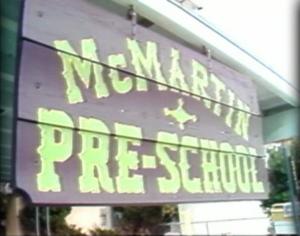
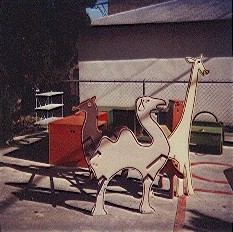
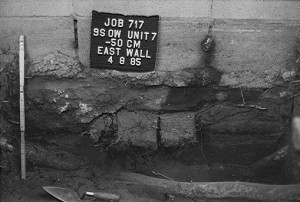
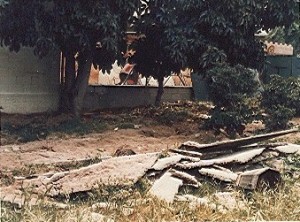


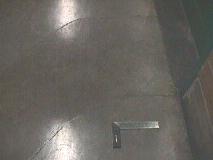
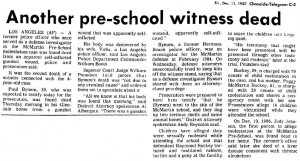

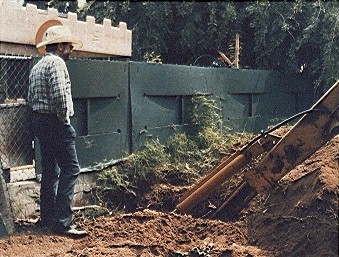
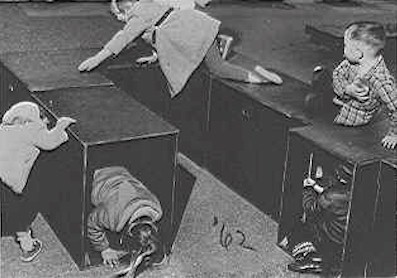

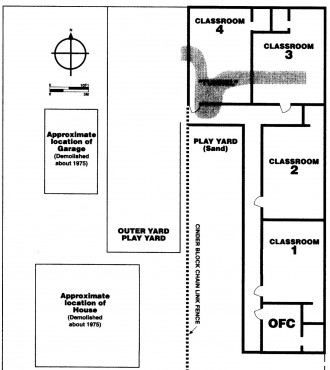
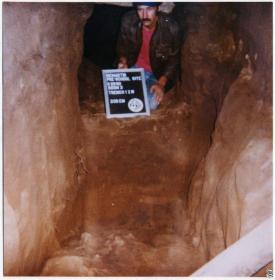
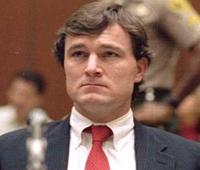
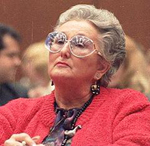
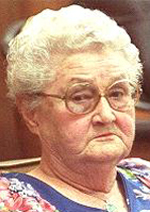

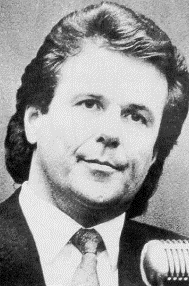
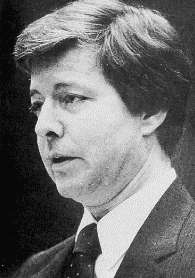

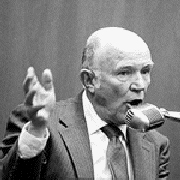
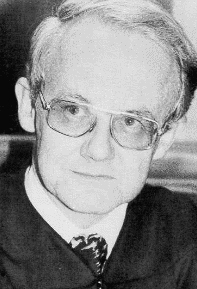
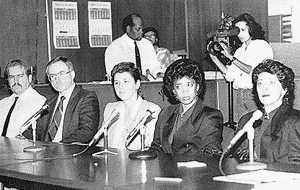

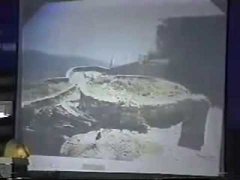

No comments:
Post a Comment